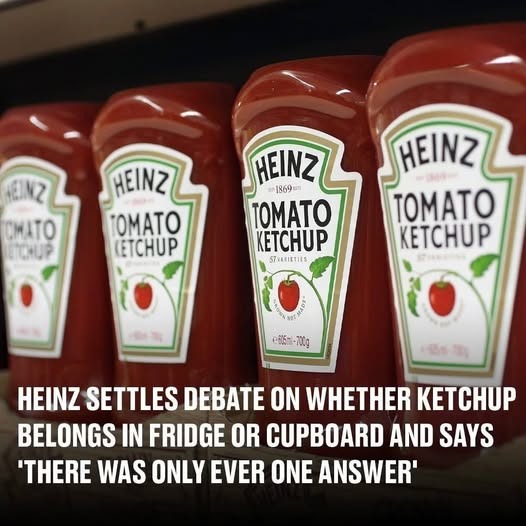ADVERTISEMENT
It wasn’t until the late 1800s that ketchup as we know it today began to take shape. In 1876, a man named Henry John Heinz introduced his now-famous Heinz Tomato Ketchup to the world. Heinz’s version was revolutionary for several reasons. Not only was it made with high-quality tomatoes and a blend of spices, but Heinz also introduced a more efficient method for preserving the ketchup, ensuring that it could be mass-produced and sold to the public at a consistent quality.
Heinz’s ketchup quickly gained popularity, becoming a household name and solidifying itself as the dominant ketchup brand in America. By the early 20th century, ketchup was a staple in nearly every American home and restaurant, and it was increasingly marketed as a versatile, must-have condiment.
### **The Rise of Ketchup in Popular Culture: A Global Staple**
As ketchup became more popular in the United States, its influence began to spread globally. Today, ketchup is enjoyed by people all over the world, and its flavor profile has been adapted to suit a variety of tastes and cuisines. In Europe, for example, ketchup is often served with fries (known as “frites” in Belgium and France), while in countries like Japan and South Korea, ketchup is sometimes used as a topping for rice dishes, grilled meats, and even pizza.
In the United States, ketchup has become synonymous with fast food. McDonald’s, Burger King, and other fast food chains are famous for their ketchup offerings, and it’s rare to find a fast food meal that doesn’t come with a small packet or dipping cup of ketchup. Ketchup’s ubiquity in American fast food culture has cemented its place as an iconic food item.
Ketchup has also been immortalized in pop culture, appearing in movies, TV shows, and advertisements. The most famous ketchup-related phrase, “Heinz 57,” refers to the 57 varieties of Heinz products that were famously marketed in their advertisements. The ketchup bottle itself has become a symbol of American life, appearing on everything from condiment trays in diners to pop art by Andy Warhol.
### **The Modern Ketchup Revolution: Innovation and Trends**
While ketchup may have started as a humble condiment, its evolution has continued in recent decades. Today, ketchup is more than just a sidekick to burgers and fries; it has become a subject of experimentation and innovation in the culinary world.
#### **1. Gourmet Ketchup: Quality Ingredients and Unique Flavors**
As food enthusiasts and chefs continue to seek out new flavors and ingredients, gourmet ketchup has become a trend in both home kitchens and high-end restaurants. Gourmet ketchups are made with premium ingredients, such as heirloom tomatoes, organic sugar, and a variety of exotic spices. These artisanal ketchups can be found in specialty food stores, farmers’ markets, and even online. They offer a wide range of unique flavors, from smoky chipotle ketchup to tangy mango ketchup, catering to diverse palates and preferences.
The rise of gourmet ketchup reflects the broader trend of consumers seeking higher-quality, more flavorful versions of classic condiments. People are no longer satisfied with the standard mass-produced ketchup—they want something that feels more personal, crafted with care and creativity.
For Complete Cooking STEPS Please Head On Over To Next Page Or Open button (>) and don’t forget to SHARE with your Facebook friends
